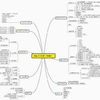相信大家对如下的Category都很熟悉,很多网站都有类似如下的功能,“商品推荐”,"猜你喜欢“,在实体店中我们有导购来为我们服务,在网络上
我们需要同样的一种替代物,如果简简单单的在数据库里面去捞,去比较,几乎是完成不了的,这时我们就需要一种协同推荐算法,来高效的推荐浏览者喜
欢的商品。


一:概念
SlopeOne的思想很简单,就是用均值化的思想来掩盖个体的打分差异,举个例子说明一下:

在这个图中,系统该如何计算“王五“对”电冰箱“的打分值呢?刚才我们也说了,slopeone是采用均值化的思想,也就是:R王五 =4-{[(5-10)+(4-5)]/2}=7 。
下面我们看看多于两项的商品,如何计算打分值。
rb = (n * (ra - R(A->B)) + m * (rc - R(C->B)))/(m+n)
注意: a,b,c 代表“商品”。
ra 代表“商品的打分值”。
ra->b 代表“A组到B组的平均差(均值化)”。
m,n 代表人数。

根据公式,我们来算一下。
r王五 = (2 * (4 - R(洗衣机->彩电)) + 2 * (10 - R(电冰箱->彩电))+ 2 * (5 - R(空调->彩电)))/(2+2+2)=6.8
是的,slopeOne就是这么简单,实战效果非常不错。
二:实现
1:定义一个评分类Rating。

1 /// <summary> 2 /// 评分实体类 3 /// </summary> 4 public class Rating 5 { 6 /// <summary> 7 /// 记录差值 8 /// </summary> 9 public float Value { get; set; }10 11 /// <summary>12 /// 记录评分人数,方便公式中的 m 和 n 的值13 /// </summary>14 public int Freq { get; set; }15 16 /// <summary>17 /// 记录打分用户的ID18 /// </summary>19 public HashSet<int> hash_user = new HashSet<int>();20 21 /// <summary>22 /// 平均值23 /// </summary>24 public float AverageValue25 {26 get { return Value / Freq; }27 }28 }
2: 定义一个产品类

1 /// <summary> 2 /// 产品类 3 /// </summary> 4 public class Product 5 { 6 public int ProductID { get; set; } 7 8 public string ProductName { get; set; } 9 10 /// <summary>11 /// 对产品的打分12 /// </summary>13 public float Score { get; set; }14 }
3:SlopeOne类
参考了网络上的例子,将二维矩阵做成线性表,有效的降低了空间复杂度。


1 using System; 2 using System.Collections.Generic; 3 using System.Linq; 4 using System.Text; 5 6 namespace SupportCenter.Test 7 { 8 #region Slope One 算法 9 /// <summary> 10 /// Slope One 算法 11 /// </summary> 12 public class SlopeOne 13 { 14 /// <summary> 15 /// 评分系统 16 /// </summary> 17 public static Dictionary<int, Product> dicRatingSystem = new Dictionary<int, Product>(); 18 19 public Dictionary<string, Rating> dic_Martix = new Dictionary<string, Rating>(); 20 21 public HashSet<int> hash_items = new HashSet<int>(); 22 23 #region 接收一个用户的打分记录 24 /// <summary> 25 /// 接收一个用户的打分记录 26 /// </summary> 27 /// <param name="userRatings"></param> 28 public void AddUserRatings(IDictionary<int, List<Product>> userRatings) 29 { 30 foreach (var user1 in userRatings) 31 { 32 //遍历所有的Item 33 foreach (var item1 in user1.Value) 34 { 35 //该产品的编号(具有唯一性) 36 int item1Id = item1.ProductID; 37 38 //该项目的评分 39 float item1Rating = item1.Score; 40 41 //将产品编号字存放在hash表中 42 hash_items.Add(item1.ProductID); 43 44 foreach (var user2 in userRatings) 45 { 46 //再次遍历item,用于计算俩俩 Item 之间的差值 47 foreach (var item2 in user2.Value) 48 { 49 //过滤掉同名的项目 50 if (item2.ProductID <= item1Id) 51 continue; 52 53 //该产品的名字 54 int item2Id = item2.ProductID; 55 56 //该项目的评分 57 float item2Rating = item2.Score; 58 59 Rating ratingDiff; 60 61 //用表的形式构建矩阵 62 var key = Tools.GetKey(item1Id, item2Id); 63 64 //将俩俩 Item 的差值 存放到 Rating 中 65 if (dic_Martix.Keys.Contains(key)) 66 ratingDiff = dic_Martix[key]; 67 else 68 { 69 ratingDiff = new Rating(); 70 dic_Martix[key] = ratingDiff; 71 } 72 73 //方便以后以后userrating的编辑操作,(add) 74 if (!ratingDiff.hash_user.Contains(user1.Key)) 75 { 76 //value保存差值 77 ratingDiff.Value += item1Rating - item2Rating; 78 79 //说明计算过一次 80 ratingDiff.Freq += 1; 81 } 82 83 //记录操作人的ID,方便以后再次添加评分 84 ratingDiff.hash_user.Add(user1.Key); 85 } 86 } 87 } 88 } 89 } 90 #endregion 91 92 #region 根据矩阵的值,预测出该Rating中的值 93 /// <summary> 94 /// 根据矩阵的值,预测出该Rating中的值 95 /// </summary> 96 /// <param name="userRatings"></param> 97 /// <returns></returns> 98 public IDictionary<int, float> Predict(List<Product> userRatings) 99 {100 Dictionary<int, float> predictions = new Dictionary<int, float>();101 102 var productIDs = userRatings.Select(i => i.ProductID).ToList();103 104 //循环遍历_Items中所有的Items105 foreach (var itemId in this.hash_items)106 {107 //过滤掉不需要计算的产品编号108 if (productIDs.Contains(itemId))109 continue;110 111 Rating itemRating = new Rating();112 113 // 内层遍历userRatings114 foreach (var userRating in userRatings)115 {116 if (userRating.ProductID == itemId)117 continue;118 119 int inputItemId = userRating.ProductID;120 121 //获取该key对应项目的两组AVG的值122 var key = Tools.GetKey(itemId, inputItemId);123 124 if (dic_Martix.Keys.Contains(key))125 {126 Rating diff = dic_Martix[key];127 128 //关键点:运用公式求解(这边为了节省空间,对角线两侧的值呈现奇函数的特性)129 itemRating.Value += diff.Freq * (userRating.Score + diff.AverageValue * ((itemId < inputItemId) ? 1 : -1));130 131 //关键点:运用公式求解 累计每两组的人数132 itemRating.Freq += diff.Freq;133 }134 }135 136 predictions.Add(itemId, itemRating.AverageValue);137 }138 139 return predictions;140 }141 #endregion142 }143 #endregion144 145 #region 工具类146 /// <summary>147 /// 工具类148 /// </summary>149 public class Tools150 {151 public static string GetKey(int Item1Id, int Item2Id)152 {153 return (Item1Id < Item2Id) ? Item1Id + "->" + Item2Id : Item2Id + "->" + Item1Id;154 }155 }156 #endregion157 }
4: 测试类Program
这里我们灌入了userid=1000,2000,3000的这三个人,然后我们预测userID=3000这个人对 “彩电” 的打分会是多少?

1 public class Program 2 { 3 static void Main(string[] args) 4 { 5 SlopeOne test = new SlopeOne(); 6 7 Dictionary<int, List<Product>> userRating = new Dictionary<int, List<Product>>(); 8 9 //第一位用户10 List<Product> list = new List<Product>()11 {12 new Product(){ ProductID=1, ProductName="洗衣机",Score=5},13 new Product(){ ProductID=2, ProductName="电冰箱", Score=10},14 new Product(){ ProductID=3, ProductName="彩电", Score=10},15 new Product(){ ProductID=4, ProductName="空调", Score=5},16 };17 18 userRating.Add(1000, list);19 20 test.AddUserRatings(userRating);21 22 userRating.Clear();23 userRating.Add(1000, list);24 25 test.AddUserRatings(userRating);26 27 //第二位用户28 list = new List<Product>()29 {30 new Product(){ ProductID=1, ProductName="洗衣机",Score=4},31 new Product(){ ProductID=2, ProductName="电冰箱", Score=5},32 new Product(){ ProductID=3, ProductName="彩电", Score=4},33 new Product(){ ProductID=4, ProductName="空调", Score=10},34 };35 36 userRating.Clear();37 userRating.Add(2000, list);38 39 test.AddUserRatings(userRating);40 41 //第三位用户42 list = new List<Product>()43 {44 new Product(){ ProductID=1, ProductName="洗衣机", Score=4},45 new Product(){ ProductID=2, ProductName="电冰箱", Score=10},46 new Product(){ ProductID=4, ProductName="空调", Score=5},47 };48 49 userRating.Clear();50 userRating.Add(3000, list);51 52 test.AddUserRatings(userRating);53 54 //那么我们预测userID=3000这个人对 “彩电” 的打分会是多少?55 var userID = userRating.Keys.FirstOrDefault();56 var result = userRating[userID];57 58 var predictions = test.Predict(result);59 60 foreach (var rating in predictions)61 Console.WriteLine("ProductID= " + rating.Key + " Rating: " + rating.Value);62 }63 }


 随时随地看视频
随时随地看视频




